Are there any heavy-duty crankshafts for sale online? Can I get a quote for a custom stroke crankshaft?
The world of high-performance engine building is a fascinating one, filled with intricate components designed to withstand immense forces and deliver incredible power. At the heart of any internal combustion engine lies the crankshaft, a critical component that converts the linear motion of the pistons into rotational motion. When you're pushing the boundaries of horsepower and torque, a standard factory crankshaft simply won't cut it. This naturally leads to two very important questions for enthusiasts and professional builders alike: Are there any heavy-duty crankshafts for sale online? Can I get a quote for a custom stroke crankshaft? To be honest, the answer to both is a resounding yes, but navigating the options requires a keen understanding of what you're looking for and where to find it.
In my experience, the journey to finding the right crankshaft, whether off-the-shelf heavy-duty or a bespoke custom stroke, is often a blend of research, networking, and precision. It’s not just about buying a part; it’s about investing in the very foundation of your engine’s reliability and performance. Let's delve into the online marketplace for these robust components and then explore the fascinating process of commissioning a custom-made crankshaft.
Navigating the Online Marketplace for Heavy-Duty Crankshafts
When you ask, "Are there any heavy-duty crankshafts for sale online?", you’ll be pleased to know the internet has become a treasure trove for performance parts. However, it's not as simple as a quick search on a general e-commerce site. Heavy-duty crankshafts are specialized components, and as such, they are typically found on specialized platforms. Interestingly enough, many experts agree that the quality and variety available online today surpass what was accessible even a decade ago.
Where to Find Them: Specialized Retailers and Manufacturers' Websites
The primary sources for heavy-duty crankshafts online are dedicated performance automotive parts retailers and the direct websites of crankshaft manufacturers. These aren't your typical auto parts stores; they cater specifically to the racing, hot rod, and high-performance street markets. You'll often find brands like Callies, Scat, Eagle, Lunati, Manley, and K1 Technologies prominently featured. These companies have built their reputations on producing crankshafts that can handle extreme loads, high RPMs, and significant power output.
When browsing these sites, you'll encounter terms like "forged," "billet," "4340 steel," and specific engine applications (e.g., "LS-series," "Small Block Chevy," "Ford Coyote"). A heavy-duty crankshaft is defined by its material composition, manufacturing process, and design features. Forged crankshafts, made from high-strength steel alloys like 4340, are significantly stronger than cast factory units. Billet crankshafts, machined from a solid block of steel, offer even greater strength and design flexibility, often considered the pinnacle of heavy-duty options for extreme applications.
It's worth noting that while general automotive parts sites might list some performance parts, for true heavy-duty crankshafts, you're better off sticking to the specialists. They often provide detailed specifications, technical support, and a deeper understanding of the product's application. Furthermore, many of these online retailers also have physical locations or strong relationships with manufacturers, ensuring authenticity and support.
Considerations When Buying Online: Verification and Reputation
While the convenience of online shopping is undeniable, purchasing a heavy-duty crankshaft online requires diligence. How do you ensure you're getting a genuine, high-quality product that meets your needs? First and foremost, always buy from reputable sources. Check reviews, look for established businesses with a long track record, and if possible, consult with experienced engine builders or forums for recommendations. Many online sellers will also offer technical support, which is invaluable when selecting a component as critical as a crankshaft.
Secondly, pay close attention to the specifications. Ensure the crankshaft's stroke, main journal diameter, rod journal diameter, and overall length match your engine block and connecting rod requirements. Don't hesitate to contact the seller or manufacturer directly if you have any doubts about compatibility or specific features. A small oversight here can lead to significant headaches and costly errors down the line. Remember, a heavy-duty crankshaft isn't just about strength; it's about precise fitment and balance within your engine's rotating assembly.
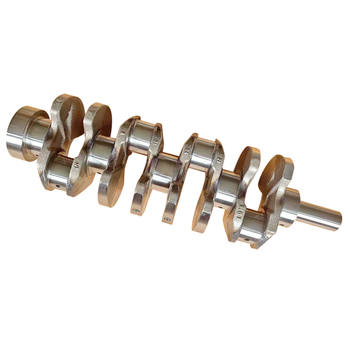
Understanding What Makes a Crankshaft "Heavy-Duty" and Why It Matters for Your Build
The term "heavy-duty" isn't just marketing jargon when it comes to crankshafts; it refers to specific engineering and material enhancements designed to withstand the rigors of high-performance applications. If you're building an engine for racing, forced induction, or simply pushing significant horsepower, understanding these distinctions is crucial. Why would you need a heavy-duty crankshaft over a stock one?
Material and Manufacturing Process: The Core of Strength
As mentioned, the primary differentiator is material. Stock crankshafts are often cast iron, which is adequate for street use but lacks the tensile strength and fatigue resistance required for high-stress environments. Heavy-duty crankshafts are typically forged from high-strength steel alloys like 4340 or 300M. Forging aligns the grain structure of the metal, making it incredibly strong and resistant to bending and fracturing under extreme loads. Billet crankshafts, machined from a solid block of even higher quality steel, offer unparalleled strength and allow for more intricate designs, often used in professional racing where every ounce of performance and reliability counts.
Beyond the material, the manufacturing process itself contributes to the "heavy-duty" nature. Precision machining, heat treatment processes (like nitriding for surface hardness), and careful balancing are all hallmarks of a quality heavy-duty crankshaft. These processes ensure dimensional accuracy, superior wear resistance, and the ability to operate smoothly at very high RPMs without excessive vibration, which can lead to premature bearing wear or even catastrophic failure.
Design Considerations: Beyond Just Strength
It's not just about raw strength; design plays a significant role. Heavy-duty crankshafts often feature larger fillet radii (the transition between the journal and the crank cheek), which reduce stress concentrations and improve fatigue life. Optimized counterweighting is another key aspect, ensuring the rotating assembly is perfectly balanced, minimizing vibration, and allowing for higher RPMs. Some designs incorporate gun-drilled main and rod journals to reduce rotating mass, or specific oiling hole configurations to ensure consistent lubrication under extreme conditions. These subtle but critical design elements are what set a true heavy-duty crankshaft apart from a standard production unit.
Many experts agree that investing in a heavy-duty crankshaft is non-negotiable for any engine producing significantly more power than its factory rating. It's the backbone of your rotating assembly, and its failure can lead to complete engine destruction. So, when you're asking about finding them online, you're asking the right question for building a reliable, powerful engine.
The Quest for a Custom Stroke Crankshaft: Why Go Custom?
Having explored the availability of heavy-duty crankshafts, let's address the second part of our core question: "Can I get a quote for a custom stroke crankshaft?" The answer is unequivocally yes, and for many serious builders, a custom stroke crankshaft is the ultimate solution for optimizing engine performance. But why go custom when there are so many off-the-shelf options?
Optimizing Displacement and Rod/Stroke Ratio
The primary reason to opt for a custom stroke crankshaft is to precisely control the engine's displacement and, crucially, its rod-to-stroke ratio. Increasing the stroke lengthens the distance the piston travels, thereby increasing the engine's displacement. This often leads to more torque, especially at lower RPMs. Conversely, a shorter stroke can allow for higher RPMs and potentially more horsepower at the top end, depending on the engine's design and camshaft profile.
The rod-to-stroke ratio is a critical factor in engine dynamics. A longer connecting rod relative to the stroke (a higher ratio) generally results in less piston side loading, reduced friction, and a more efficient combustion event, often leading to better high-RPM stability and power. A shorter rod (lower ratio) can lead to more aggressive piston acceleration and higher piston speeds, which can be beneficial for certain power bands but also increases wear and stress. A custom stroke allows you to fine-tune this ratio to perfectly match your cylinder head flow, camshaft profile, and intended application, whether it's a drag racer, a road course car, or a high-torque truck engine.
Addressing Unique Engine Build Requirements
Sometimes, a custom stroke isn't just about optimization; it's about necessity. Perhaps you're working with a highly modified or unusual engine block that requires specific main or rod journal sizes that aren't standard. Or maybe you're trying to achieve a very specific displacement target for a racing class. In these scenarios, off-the-shelf solutions simply won't suffice. A custom crankshaft manufacturer can machine a crankshaft to your exact specifications, including journal diameters, stroke length (down to thousandths of an inch), counterweighting, and even flange designs for specific transmissions or dry sump systems. This level of precision and customization is simply not available with mass-produced components.
In my experience, the decision to go custom is often driven by a desire for absolute control over every aspect of the engine's performance. It's an investment that pays dividends in terms of optimized power delivery, enhanced reliability, and the satisfaction of having a truly bespoke engine component. It allows builders to push the boundaries of what's possible with a given engine architecture, creating truly unique and powerful combinations.
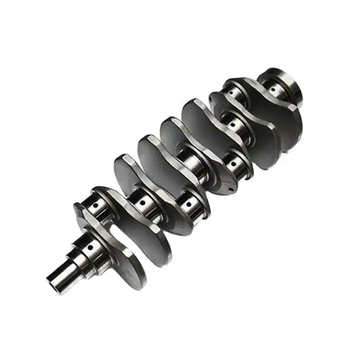
Demystifying the Custom Stroke Crankshaft Quoting Process
So, you've decided a custom stroke crankshaft is the way to go. The next logical step is to get a quote. This process is more involved than simply adding an item to a cart online, but it's far from daunting. Reputable manufacturers are accustomed to working with customers to define their needs. The key is to provide as much detailed information as possible to ensure an accurate quote and a crankshaft that meets your exact specifications.
What Information Do Manufacturers Need for a Quote?
When you contact a custom crankshaft manufacturer, they will typically ask for a comprehensive list of specifications. This information is crucial for them to understand the scope of the project, select the appropriate material, and allocate machining time. Here’s a breakdown of what you should be prepared to provide:
- Engine Type and Application: Is it a Small Block Chevy, a Ford Coyote, a specific import engine? What is its intended use (street, drag racing, endurance, marine, industrial)? This helps them understand the expected loads and RPMs.
- Desired Stroke Length: This is the most obvious custom parameter. Be precise, often to three or four decimal places (e.g., 3.750", 4.000", 4.125").
- Main Journal Diameter: The diameter of the journals that ride in the main bearings in the engine block.
- Rod Journal Diameter: The diameter of the journals where the connecting rods attach.
- Rod Journal Width: The width of the rod journals, which dictates the width of the connecting rod big end.
- Rear Flange/Pilot Hole: Details about how the flywheel or flexplate attaches, and the pilot hole for the transmission.
- Front Snout Configuration: Details for harmonic balancer and timing gear attachment.
- Material Preference: Do you require 4340 forged steel, billet 4340, or something even stronger like 300M?
- Target RPM Range and Horsepower/Torque Goals: This helps the manufacturer recommend appropriate counterweighting and material strength.
- Oiling System Requirements: Any specific cross-drilling or oiling modifications.
- Balancing Requirements: Internal or external balance, and whether you'll be sending other rotating assembly components for balancing.
Providing this level of detail upfront will streamline the quoting process significantly. Many manufacturers have online forms or dedicated sales engineers who can walk you through the necessary questions.
Factors Influencing Cost and Lead Time
The cost of a custom stroke crankshaft can vary widely, typically ranging from a few thousand dollars to well over ten thousand, depending on complexity, material, and manufacturer. Key factors influencing the price include:
- Material: Billet crankshafts are generally more expensive than forged due to the material cost and the extensive machining required.
- Complexity of Design: Unique journal sizes, intricate counterweighting, or specialized features will increase machining time and cost.
- Machining Time: The more custom features, the longer it takes to machine.
- Balancing: Precision balancing is often included but can add to the cost if extremely tight tolerances are required or if you're sending additional components.
- Lead Time: Custom crankshafts are not off-the-shelf items. Lead times can range from several weeks to several months, especially for highly specialized designs or during peak seasons. Expedited services may be available at an additional cost.
When you receive a quote, make sure it's comprehensive and includes all the details you discussed. Don't be afraid to ask clarifying questions about the material, manufacturing process, warranty, and estimated lead time. Many experts agree that clear communication with the manufacturer is paramount for a successful custom crankshaft project.
Ensuring Quality and Compatibility When Purchasing Heavy-Duty or Custom Crankshafts Online
Whether you're buying a heavy-duty off-the-shelf crankshaft or commissioning a custom stroke unit, the ultimate goal is a reliable, high-performing engine. This means ensuring both quality and compatibility are top priorities. It's not enough to simply find a part online; you need to verify it's the right part and that it meets the highest standards.
The Importance of Specifications and Verification
Double-checking specifications is critical. Compare the crankshaft's main and rod journal diameters, stroke, and overall dimensions against your engine block, connecting rods, and pistons. Many manufacturers provide detailed specification sheets or CAD drawings, especially for custom orders. If you're unsure, measure your existing components or consult with a professional engine builder. A common mistake is assuming compatibility based on engine family alone; variations exist even within the same engine series.
Upon receiving your crankshaft, whether heavy-duty or custom, it's advisable to have it inspected by a qualified machinist or engine builder. They can verify dimensions, check for any shipping damage, and confirm that it meets the specified tolerances. This step, while seemingly minor, can save you significant headaches during assembly. Remember, even the best manufacturers can have an anomaly, and catching it before installation is always best.
Professional Installation and Balancing
A heavy-duty or custom crankshaft is a precision component that requires professional handling. While you can purchase it online, its installation is best left to experienced hands. This includes:
- Precision Machining: Ensuring the engine block's main bearing bores are perfectly aligned and sized.
- Bearing Selection: Choosing the correct bearing clearances for your application and oiling system.
- Balancing: Even custom crankshafts, while balanced at the factory, benefit from a final dynamic balance with the entire rotating assembly (crankshaft, connecting rods, pistons, rings, pins, and harmonic balancer/flywheel). This ensures the smoothest operation, reduces vibration, and extends the life of all components.
- Proper Assembly: Following torque specifications, using the correct lubricants, and ensuring all components are installed without undue stress.
In my experience, many engine failures attributed to "bad parts" are actually due to improper installation or insufficient attention to detail during assembly. Investing in a high-quality crankshaft online is only half the battle; the other half is ensuring it's installed correctly by someone who understands the nuances of performance engine building. This holistic approach guarantees that your investment in a heavy-duty or custom stroke crankshaft pays off in reliable, high-performance power for years to come.
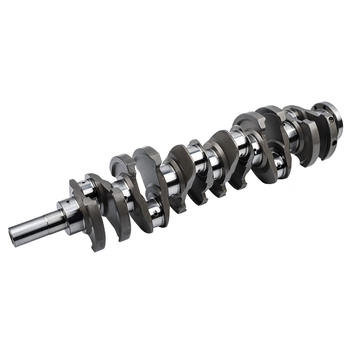
So, whether you're searching for a robust, off-the-shelf heavy-duty crankshaft or contemplating the bespoke perfection of a custom stroke unit, the online world offers unparalleled access. The key is to approach the process with knowledge, diligence, and a commitment to quality. The right crankshaft is the heart of a powerful engine, and with careful selection and professional installation, your performance goals are well within reach.
For more detailed information, please visit our official website:heavy-duty crankshafts
About the author: John "The Crank" Smith is a seasoned engine builder and automotive engineer with over 20 years of experience specializing in high-performance rotating assemblies. His expertise spans from selecting off-the-shelf heavy-duty components to designing custom crankshafts for extreme applications. John is passionate about sharing his knowledge to help enthusiasts and professionals achieve their engine building goals with precision and reliability.
 Trusted Crankshaft Manufacturi
Trusted Crankshaft Manufacturi
 Trusted Crankshaft Supplier |
Trusted Crankshaft Supplier |
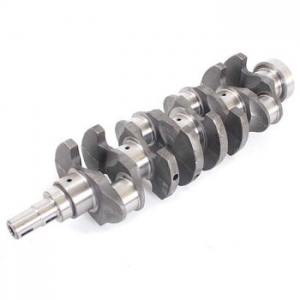 Trusted Crankshaft Manufacture
Trusted Crankshaft Manufacture
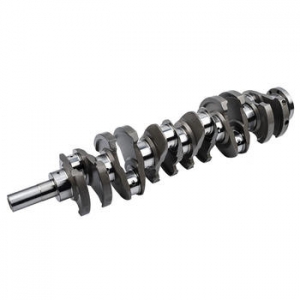 Trusted Crankshaft company Man
Trusted Crankshaft company Man
